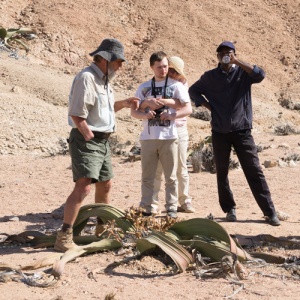Perspective on Opportunity, Adaptability and Sustenance.
Do you feel as if your career is lost in a desert? That you no longer know how your career can survive, let alone thrive? I believe many, if not all of us, feel like this from time to time, at various junctures in our careers.
If might be worse for you at the moment if your organisation is restructuring, and you don’t know where or how your role will fit in, or if you have an internal conflict between what you would love to do and how you pay the bills, or, confusingly, you just can’t work out where your future career opportunities best lie.
My own experience of corporate life and working for myself is that both have given me the “desert experience” from time to time – when I can’t see what’s there for my career, what’s next, and nothing looks like it is growing, possible or attractive. When I’m in that place, it can be hard to motivate myself, easy to be discouraged and easy to feel stuck.
I have learnt that often I just need a new way of looking at things to restart the motor.
Our recent family trip to Namibia gave me an experience of doing just that, helping me to create a new perspective. We spent a fascinating day in the Namib Desert with Achim from Turnstone Tours on their “Exploring the Swakop and Khan River Valleys Tour”.
The Namib Desert is the world’s oldest desert, it has existed for at least 55 million years, is completely devoid of surface water and bisected by several dry riverbeds. It rains here less than half an inch of water a year. Thick fogs frequent the coast at Swakopmund, meaning it is clammy every morning in the town. These fogs are the life-blood of the desert, providing enough moisture for a number of highly-adapted animal and plant species to survive.
Achim’s knowledge and experience was able to take us beyond the obvious, to show us how much the desert is alive and growing. He showed us how much is happening, although, from the distance, it looked harsh, empty and barren.
Here are some of my thoughts on how to turn round your thinking on the idea of the Living Desert, and how it might apply to your career:
THE WELWITSCHIA PLANT – A DIFFERENT PERSPECTIVE ON OPPORTUNITY
This is the Welwitschia flower, found only in Namibia – in two or three of the desert areas. Might you be surprised to learn that this one is probably 750 years old?
The Welwitschia plant is Namibia’s national flower. It can be up to 1.5 m tall and they only ever have two fibrous, straplike leaves, although it can look like more. The leaves persist throughout the entire life of the plant and curl into fantastic shapes on the ground. The largest Welwitschia plants are estimated to be about 2,500 years old, surviving in very harsh conditions. They are very slow growing – a ten year old plant can be only one inch long.
Of relevance to the idea of this blog, we learnt that the Welwitschia plant is very fussy about where it will grow. Humans have tried and failed to grow them from seed or transplant them. It is a mystery why they grow only where they do. We have to accept where they choose to grow, not the other way round.
QUESTIONS FOR YOU:
How would it be if your best career prospects, your ideal clients, the professional life you want – isn’t about your endeavour or looking at it from your perspective? That sometimes you need to find out where fantastic things are growing already – to change perspective on where opportunities can be found, and then move to them?
THE NAMIB DESERT BEETLE – A DIFFERENT PERSPECTIVE ON ADAPTATION
The Namib Desert is also known for many varieties of beetle, many of which have evolved methods of condensing the coastline fog into water to drink. You can appreciate this is critically important with the rain level as low as it is.
With the desert beetle, for example, little droplets from the fog settle on its shell. Water-repellent ridges channel then these drops toward the beetle’s head, which as they get bigger roll down into the beetle’s mouth.
The head-standing beetle (Onymacris unguicularis) creeps to the crest of a sand dune when fog is present. It then faces into the wind and stretches high up on its back legs so that its body tilts forward, head down. As the fog precipitates onto its body and runs down into its mouth, the beetle drinks.
QUESTIONS FOR YOU:
We all need water. How can you adapt to find, collect and absorb your equivalent of water in your career – your ability to survive – in your career desert? How can you innovate like these beetles have, to meet your needs, and find what you want?
THE !NARA PLANT – A DIFFERENT PERSPECTIVE ON SUSTENANCE
Here is a picture of Acanthosicyos horridus, an unusual melon which occurs only in Namibia, called !nara (in languages that use tongue clicking, the exclamation point denotes a click). The fruit is an essential food source for the Topnaar people. The !nara plant and the various parts of the melon are prepared and eaten in many ways. The seeds are roasted, the pulp is mashed to make a porridge, the oil is extracted from it, and more.
We learnt that the !nara plant has adapted to grow in harsh conditions such as in the Namib desert. Its roots go several meters deep into the sand to reach underground water sources. Achim also told us about grazing rights. The principle is that not everyone can take the melons, your people must have the right to eat them. If we adhere to these principles, the food is available for all those with grazing rights when they need it.
QUESTIONS FOR YOU:
How might this this concept of desert food being available to nurture you, apply to your career success?What are your entitlements, your “grazing rights”, available to support your career? How might this principle help you to think differently about being able to thrive when in the desert?
Letting go so the Living Desert can come
Sometimes for career success, the irony is that we need to let go. We need to stop trying so hard to make things happen. We need to become better at seeing, accepting and working with that which is already there. Once we let go, everything present and growing in the desert can reveal itself to us, allowing us to re-start the motor and make positive choices moving forward.
If the metaphor of the Living Desert – and the questions on opportunity, adaptability and sustenance – have caught your imagination and you would like to stretch it further – get in touch. I’d love to work with you, your team or your organisation to help you let go of “oughts”, “should” and “musts” of your careers – and to find out and work with what is already there in your Living Desert.
P.S. Let’s broaden this out – what else is growing in the career desert already, that might help us? Please share your thoughts, and better still, any examples that come to mind – about actual deserts or how the metaphor of opportunity, adaptability and sustenance shows up in the world of your career – I find both equally fascinating!
Photo credits: Martin How














